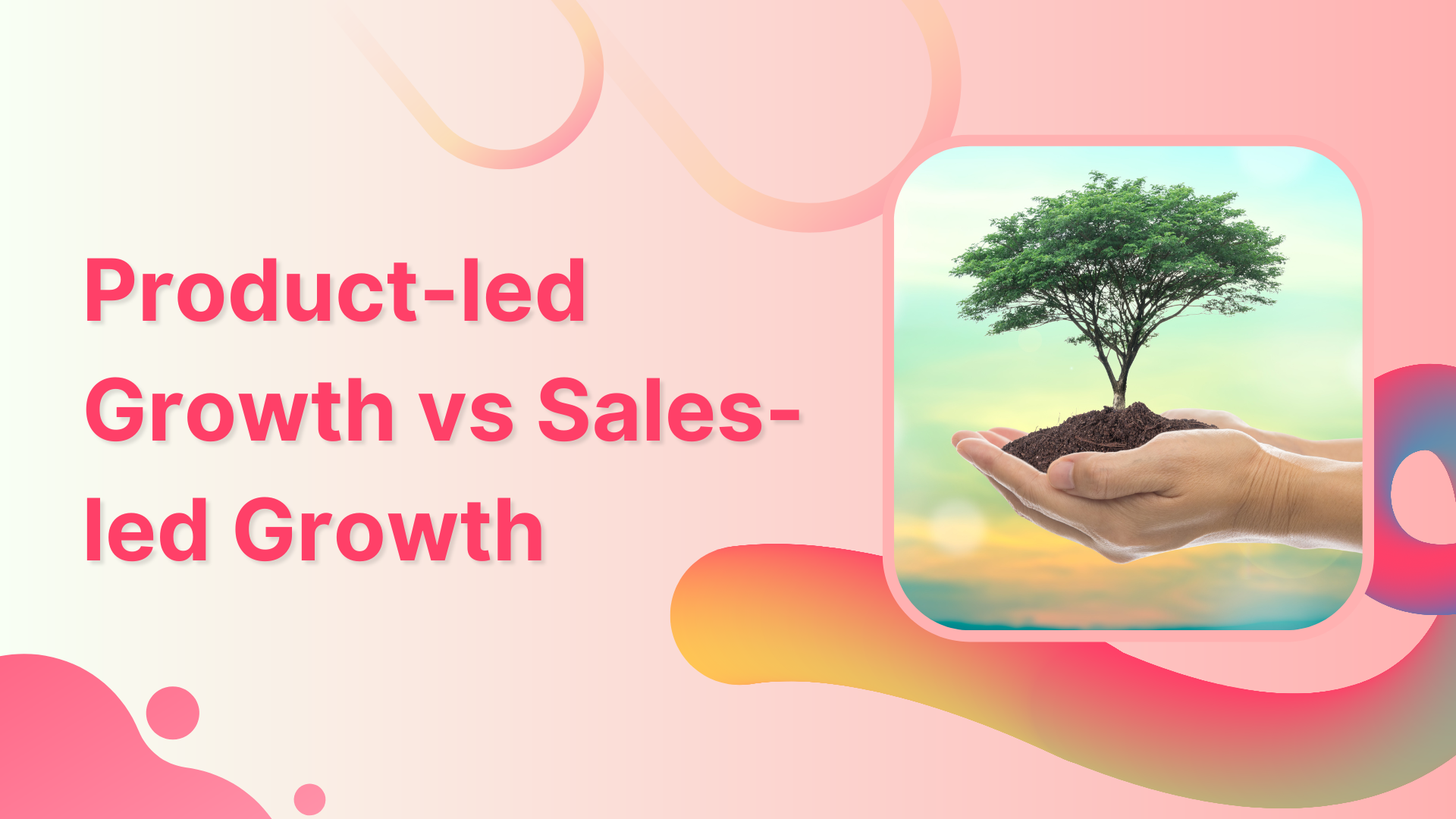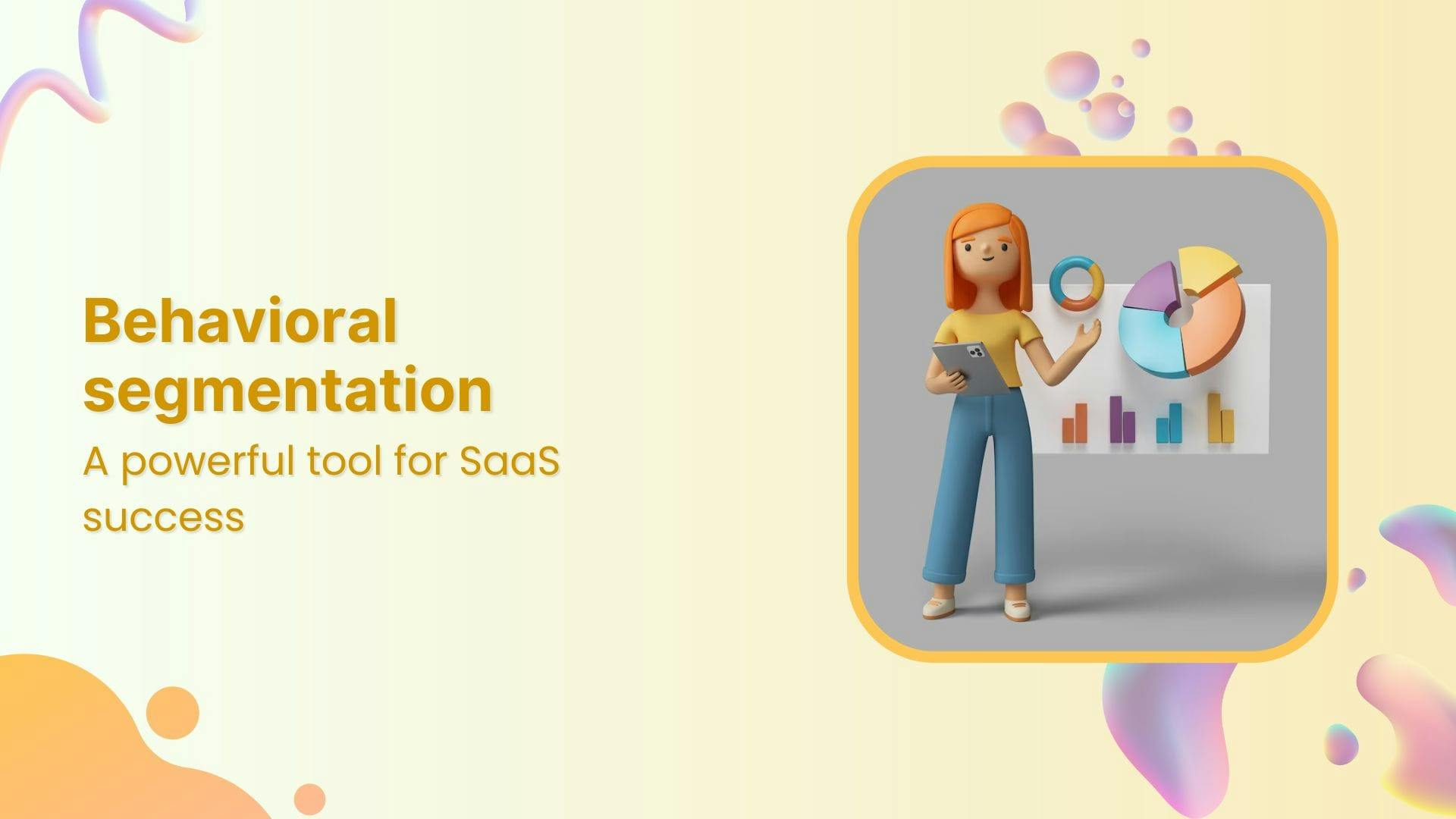
Table of contents
- What Is Product-Led Growth?
- What Is Sales-Led Growth?
- What's The Difference?
- Why Startups Prefer Product-Led Growth Over Sales-Led Growth
- Product-Led vs Sales-Led: Which One is Right for You?
- What is a Hybrid Model?
- How You Can Implement a Product-Led Strategy in Your Business
- Frequently Asked Questions
- Conclusion
Product-led Growth vs Sales-led Growth
Sep 16, 2022
6 mins read
If you're a business owner, you know that growth is essential. But what's the best way to grow your business? Product-led growth vs sales-led growth?
Let's take a look at the pros and cons of product-led growth and sales-led growth so you can decide which growth strategies are right for your business.
What Is Product-Led Growth?
Product-led growth (PLG) is a business model where the primary growth driver is through the product itself, rather than through sales and marketing efforts. The key to success with a product-led growth model is to create a product that is so compelling and useful that it drives end users to naturally tell others about it, resulting in organic growth.
Not only organic growth, but it's a form of self-service, where users find, educate, and onboard themselves (to a certain degree).
What Is Sales-Led Growth?
Sales-led growth, on the other hand, is a business model where the primary growth driver is through sales and marketing efforts, rather than through the product itself.
The key to success with this model is to create a sales process that is so effective that it drives potential customers to purchase the product, resulting in growth and customer success.
Sales approaches usually require a higher number of personal touches, as opposed to the self-service customer acquisition model.
What's The Difference?
Sales-led growth is the traditional model of business growth. In this model, sales-led companies focus on generating revenue growth through inbound or outbound sales activities. This might involve hiring sales teams, investing in marketing, and offering discounts or other incentives like a free trial to customers.
The goal is to increase the top line, or revenue, as quickly as possible.
Product-led companies use a newer model that focuses on using the product itself to drive growth. In this model, businesses focus on creating a great product that customers will want to use.
The goal is to increase adoption and product usage, which will, in turn, drive revenue growth.
So, which model is better?
It depends on your business and your goals. If you're focused on short-term growth, then a sales-led approach might be a good option. If you're focused on long-term growth, then a product-led approach might be a better option.
Ultimately, it's up to you to decide which growth strategies are best for your business. If you're not sure, it might be worth trying both models and seeing which one works better for you.

(Source)
Why Startups Prefer Product-Led Growth Over Sales-Led Growth
Sales processes have always been the primary focus for SaaS companies. However, in recent years there has been a shift toward product-led growth. This is because it allows startups to scale more quickly and efficiently.
There are a number of reasons why product-led growth is becoming more popular among startups.
First, it is a more efficient way to scale. Product-led companies can reach a larger audience more quickly and with less customer acquisition costs.
Second, it helps software companies to build more sustainable businesses. By focusing on the product first, startups can create a moat around their business that will be difficult for competitors to replicate.
Third, product-led growth allows B2B SaaS companies to better control their destiny. By focusing on the product, startups can ensure that they are delivering the best possible experience to their existing customers.
Fourth, it gives startups the opportunity to build a brand. By focusing on the product, startups can create a strong and recognizable brand that will be associated with quality and value.
Finally, product-led growth is simply a better way to build a business. It is a more efficient way to scale, it helps startups to build a more sustainable business, it allows startups to better control their destiny, and it gives startups the opportunity to build a strong brand.
Sales will always be important for startups. However, product-led growth is becoming increasingly popular because it is a more efficient and effective way to build a business.
Product-Led vs Sales-Led: Which One is Right for You?
There are several factors that go into determining which type of growth model is best suited for your SaaS business. These factors include your target audience, product pricing, and ease of use.
If your product is targeted toward small business owners and is something that anyone can quickly pick up, then using a product-led sales approach might be best.
A sales-driven growth strategy works best for companies with complex products that target large enterprises. Since these companies don’t have the time to try multiple products, your sales team and account managers will guide them through the purchase process, and also help install the product if necessary.
Another way to decide whether a product-led vs sales-led approach is better for you is to look at your pricing and go-to-market strategy.
If you offer a freemium or free trial that people can test before they buy, then a product-led system that incentivizes them to buy your product is a good idea.
If your product has complex pricing and depends on multiple factors, you may want to use sales-led strategies.
What is a Hybrid Model?
To grow and scale your business, it’s best if you focus on either product-led or sales-led strategies. But, as your company grows, it may be beneficial to run both as a hybrid model.
If you hunt larger accounts and are looking to expand into smaller ones, then running a parallel hybrid model may be a good strategy.
Here is an example of how successful startups run both strategies side by side.
Different paying customers receive different types of services based on their needs. For enterprise companies, the company provides a more traditional sales process, while for smaller companies, it offers a product-led approach.
- Add 2 different types of CTA buttons that are geared toward specific customers.
- During the onboarding process, ask customers a series of segmentation questions that will reveal their buying preferences. Based on their answers, you can then offer specific products.
- Provide different levels of customer service.
- Try running both approaches at different points in the customer lifecycle. If users demonstrate a certain behavior, for example, downloading a whitepaper, then they can be classified as either product- or sales-qualified leads.
Product-led and sales-led should work closely together, but make sure you define your buyer’s journey in advance.
How You Can Implement a Product-Led Strategy in Your Business
Product-led companies focus on delivering value to the customer through the product, rather than through traditional sales and marketing channels.
This shift in focus has been driven by the changes in how customers purchase products and services, as well as the way they consume information. In the past, customers would typically learn about a product or service through advertising, word-of-mouth, or sales teams.
Today, customers are much more likely to do their own research online before making a purchase. They will read reviews, compare prices, sign up for a free trial, and look for the best deal. This change in behavior has made it essential for businesses to have a strong online presence and to focus on delivering value through their product.
Product-led companies should take a different approach to marketing and sales. The goal is to create a product that is so valuable to the customer that they are willing to pay for it. To do this, software and SaaS companies need to focus on creating a great user experience and delivering value at every stage of the customer journey.
Implementation of a product-led strategy can be a challenge for businesses that are used to the traditional sales and marketing model. It requires a shift in thinking and a focus on the product above all else. But for businesses that are willing to make the change, the rewards can be great.
Frequently Asked Questions
What is the difference between product-led growth and sales-led growth?
Product-led growth is when a company’s primary focus is on creating a great product that will sell itself. Sales-led companies focus is on marketing its product to a specific market with much effort from the sales team.
What is a product-led growth strategy?
Product-led companies focus on growing their business by first and foremost developing a great product, as opposed to focusing on sales and marketing efforts. The thinking is that if you have a great product, customers will naturally flock to it and sales will follow.
This is in contrast to sales-led companies that focuses first and foremost on generating sales, often through aggressive marketing and selling tactics.
What is product-led sales?
Product-led sales is a term used to describe a company's growth strategy that is focused on selling products, rather than acquiring customers. This type of strategy is often used by companies that have a unique product or service that they can sell directly to consumers.
Conclusion
Product-led growth vs sales-led growth: which approach is best for your business? Product-led growth is a great way to grow your business if you have a strong product. However, it can be difficult to sustain without a sales team in place to drive adoption.
Sales-led growth is a good option if you have a weak product but strong sales skills. Ultimately, the best approach for your business depends on your specific situation and goals.

Know what's happening at every touchpoint of your users’ journey with AI-powered analytics.
It's 100% Free to Try!


